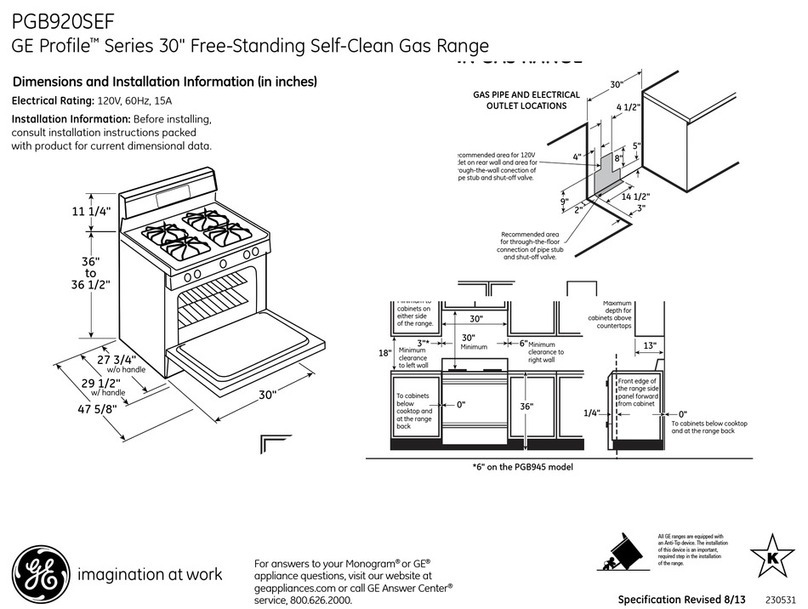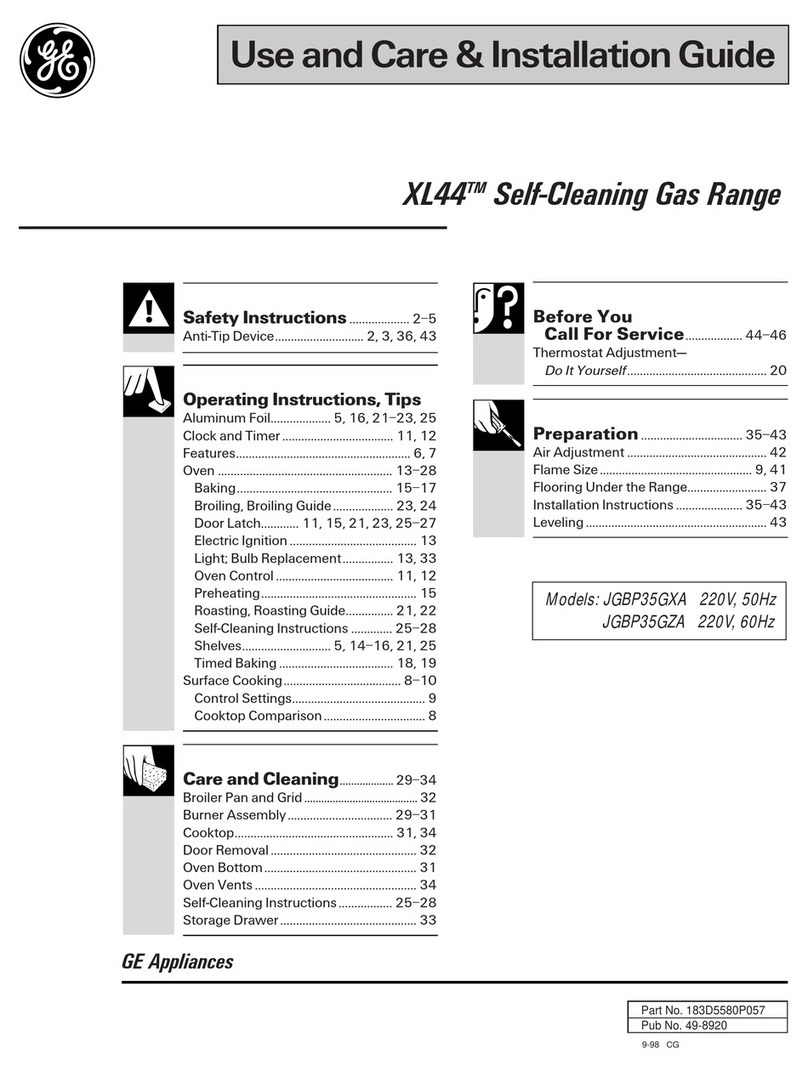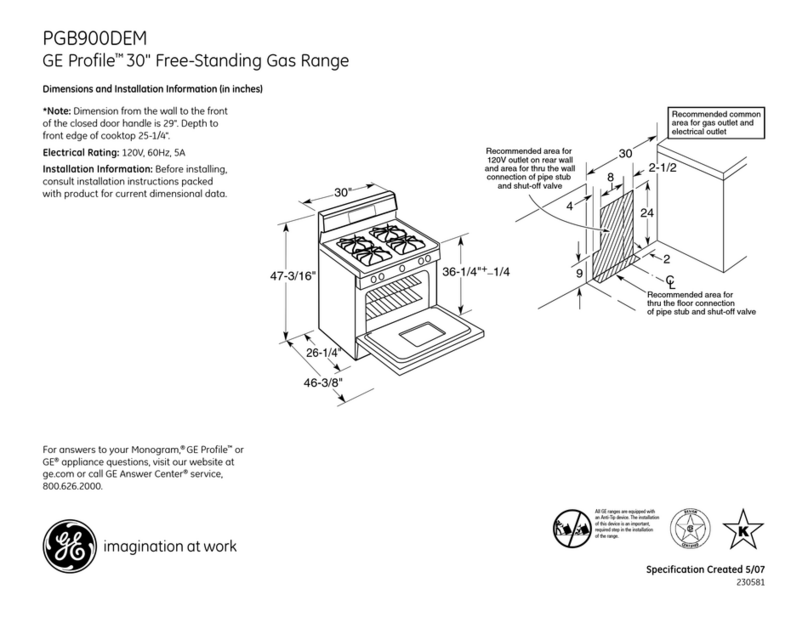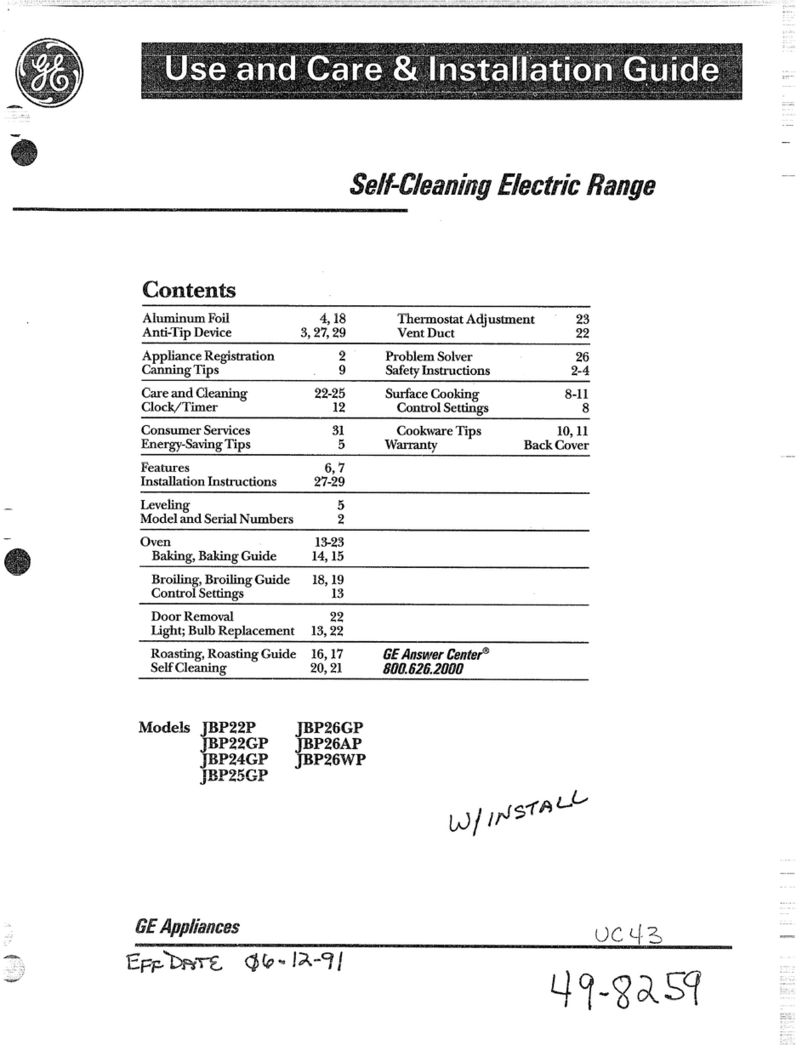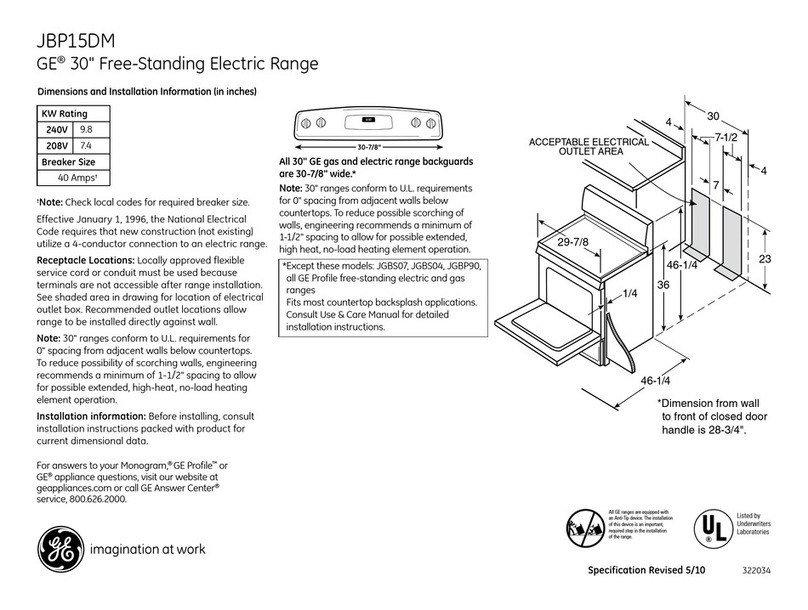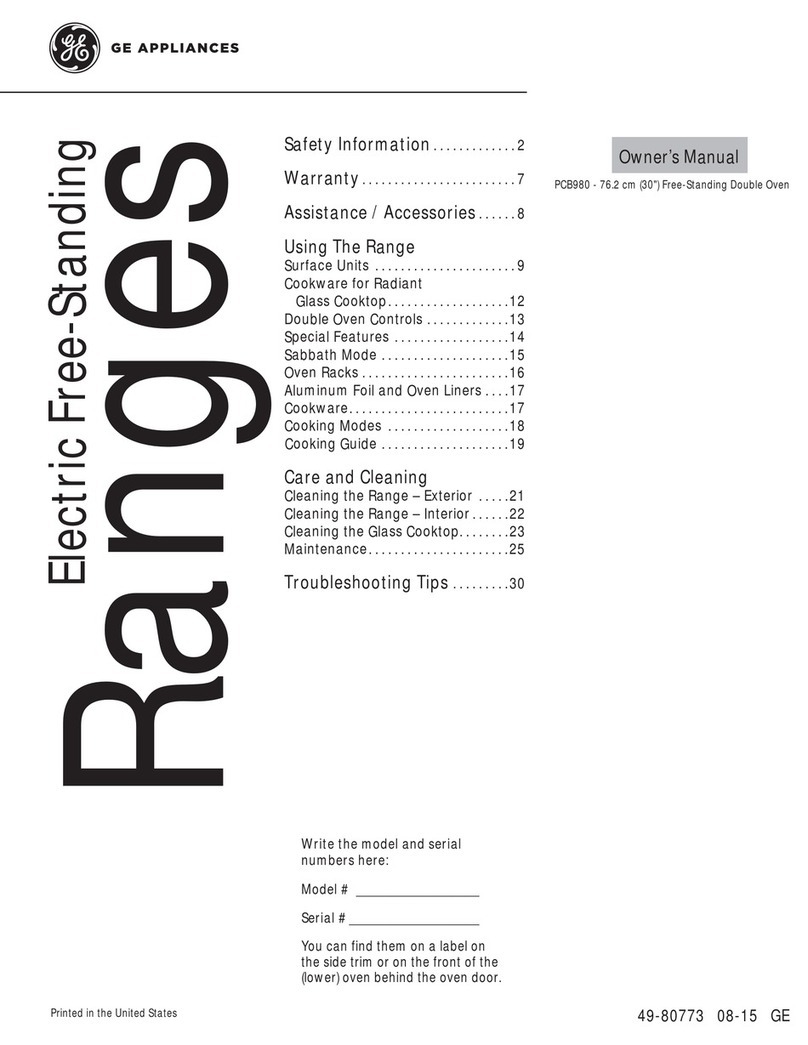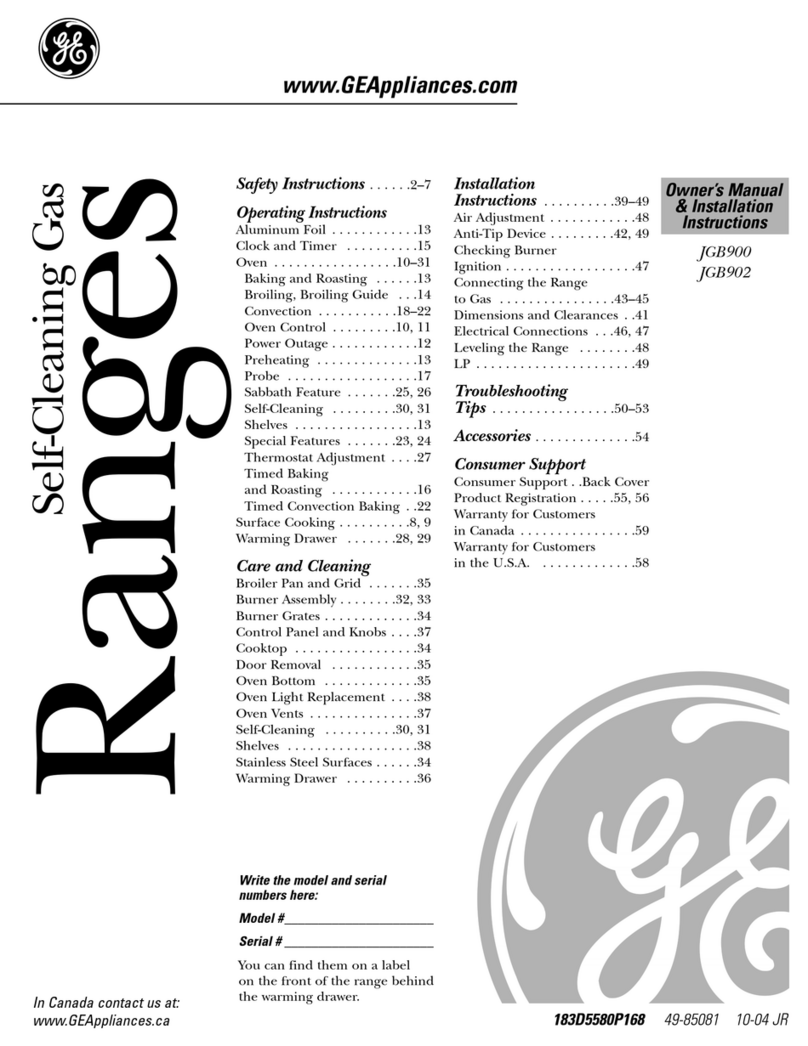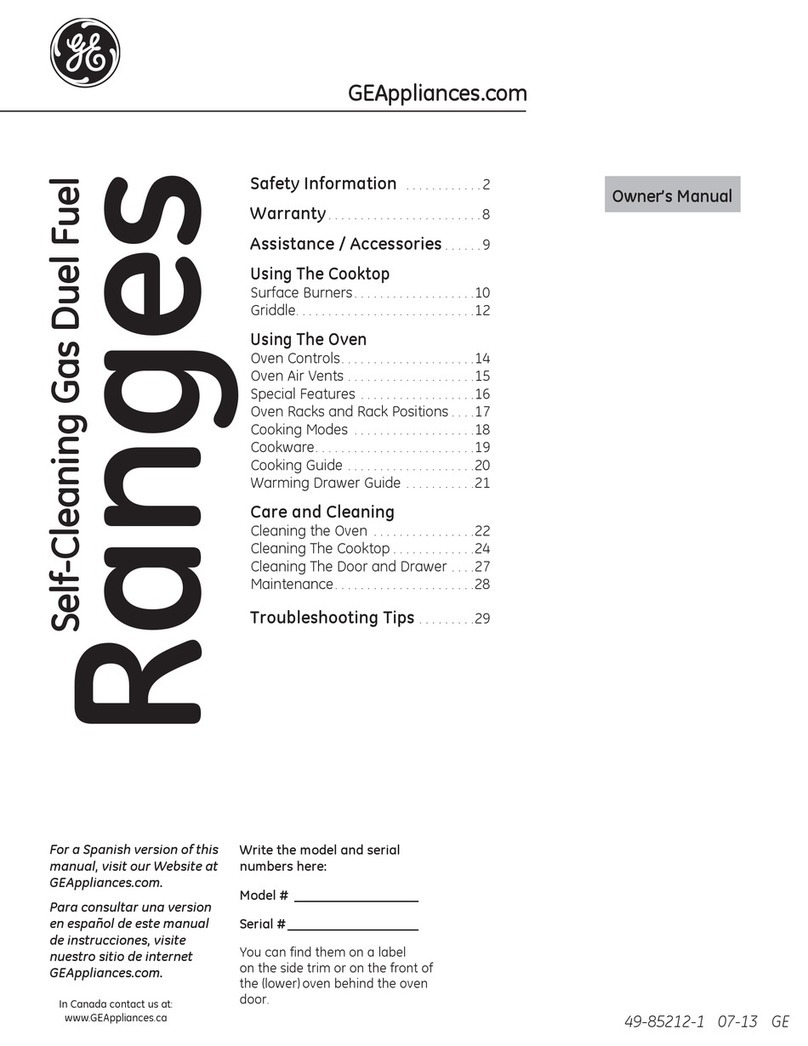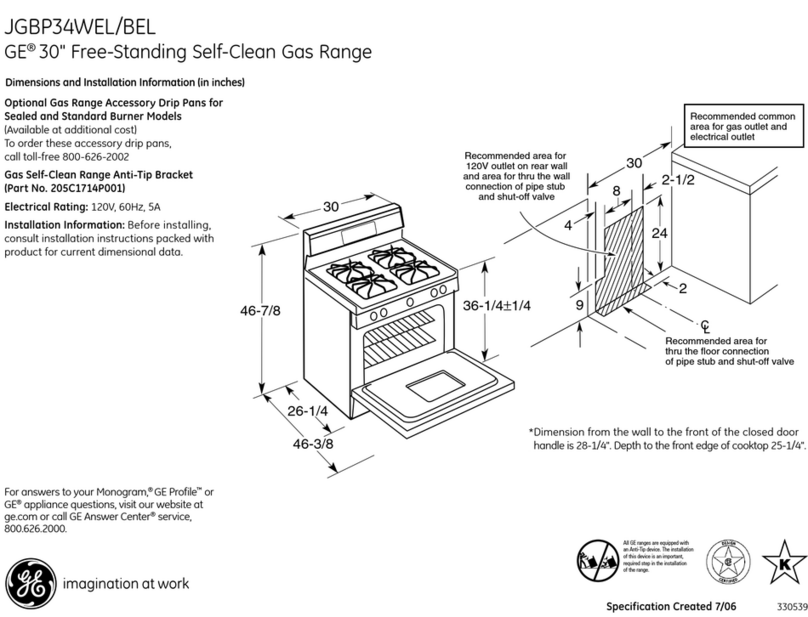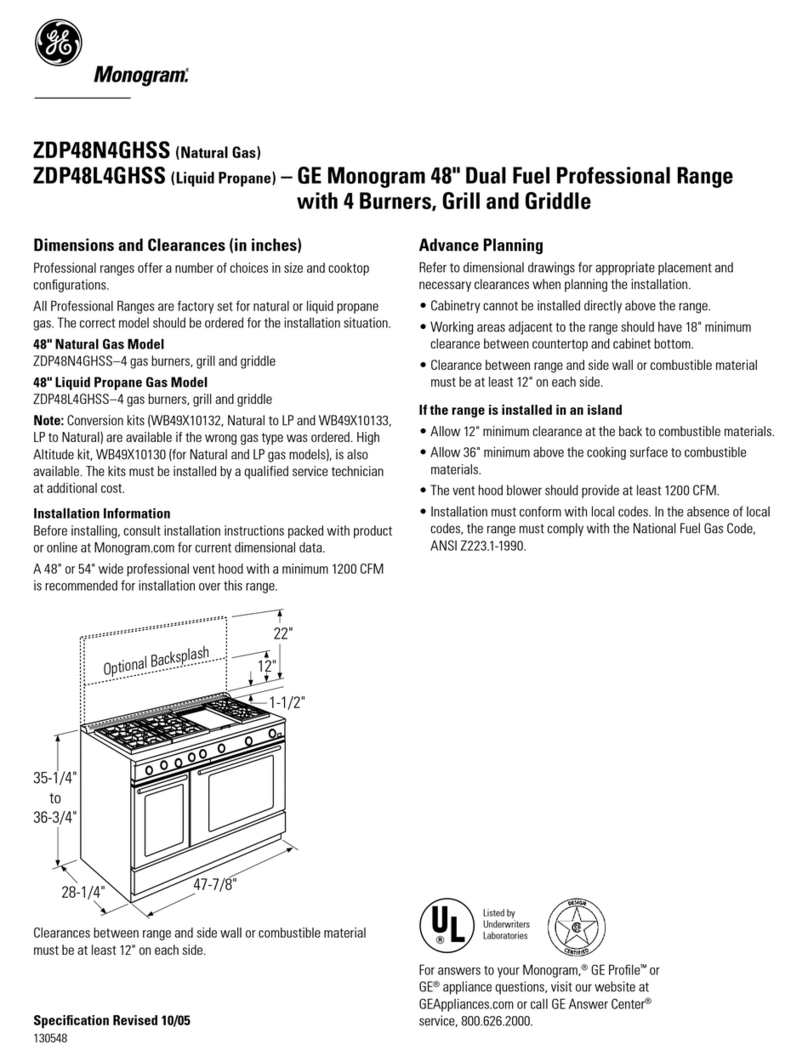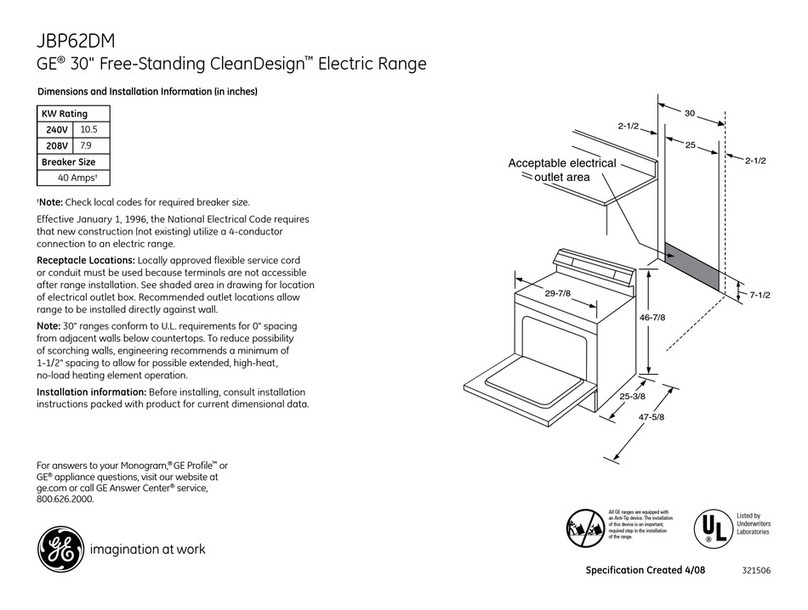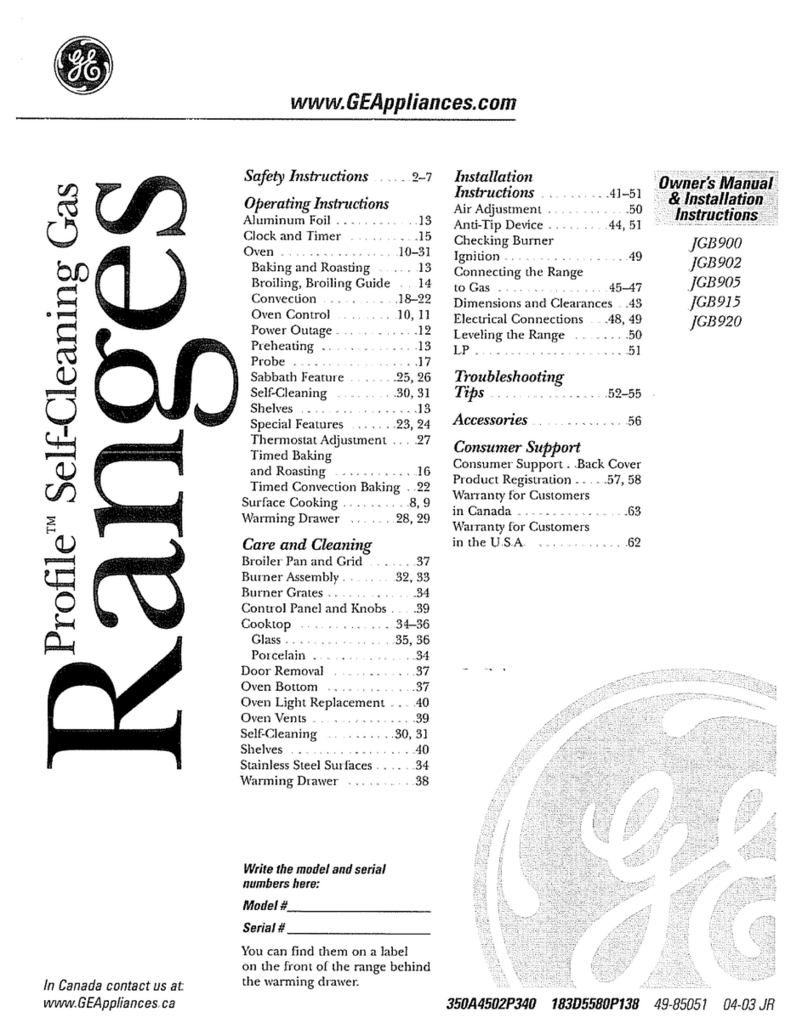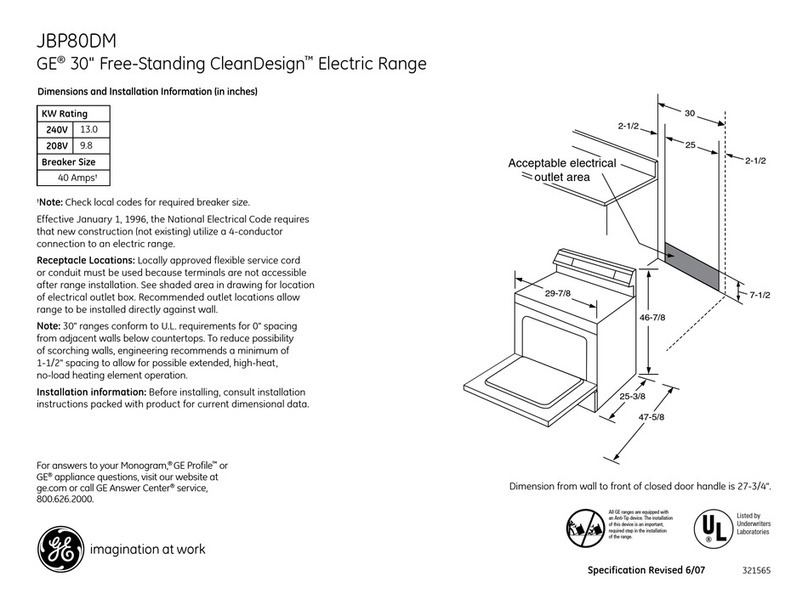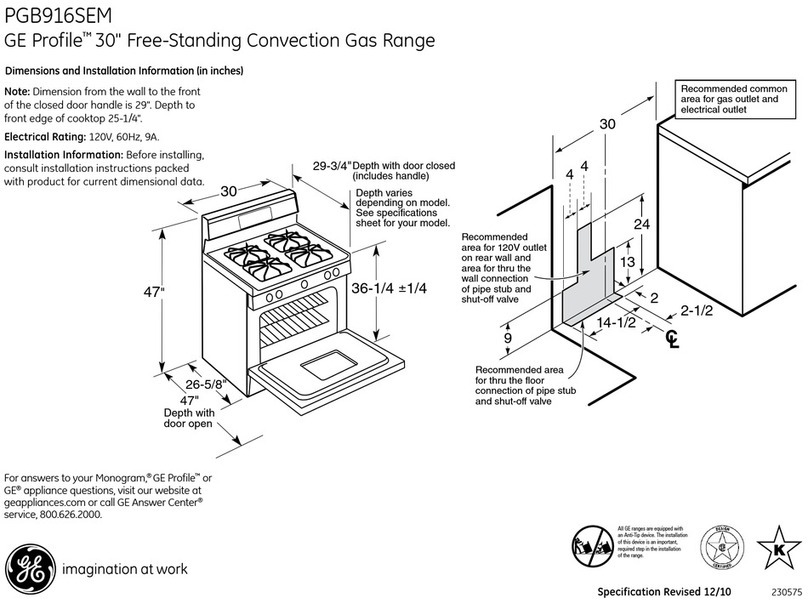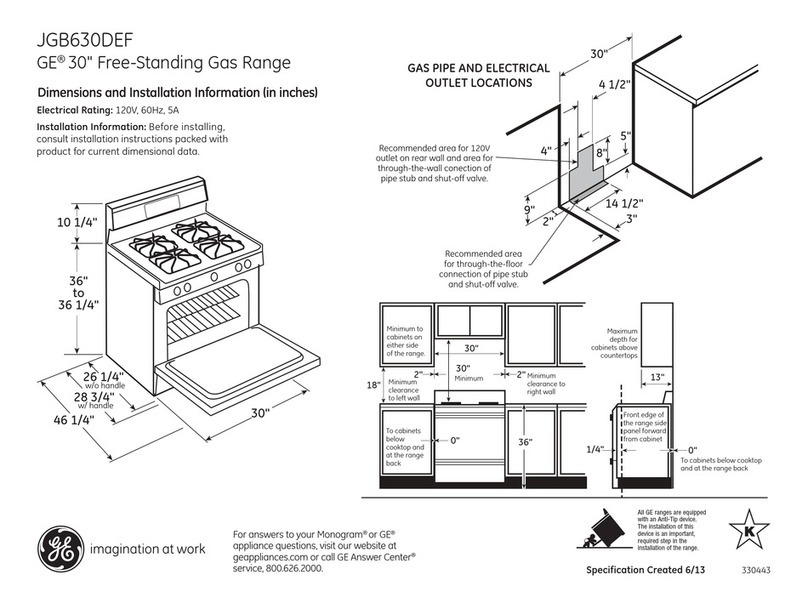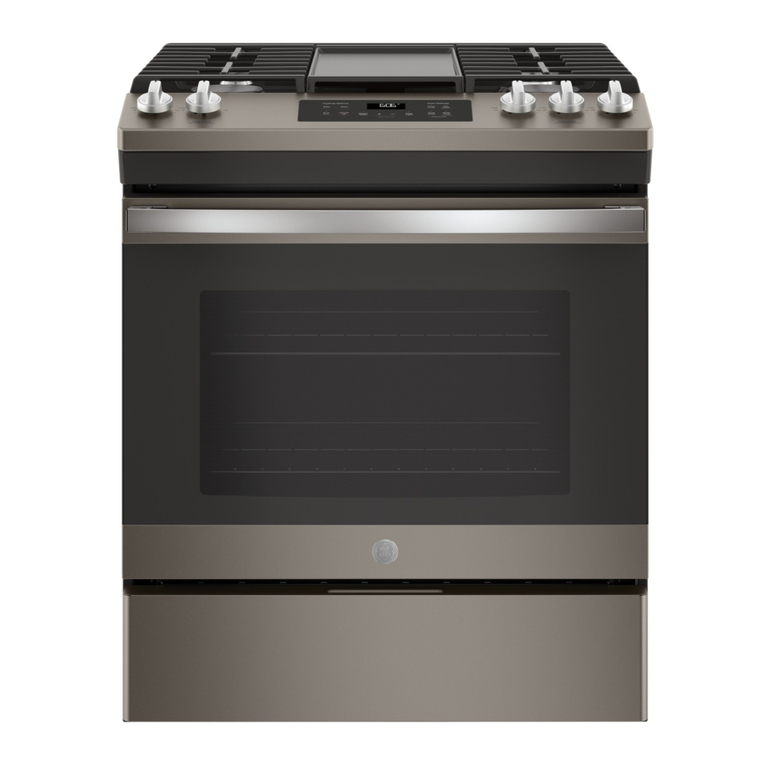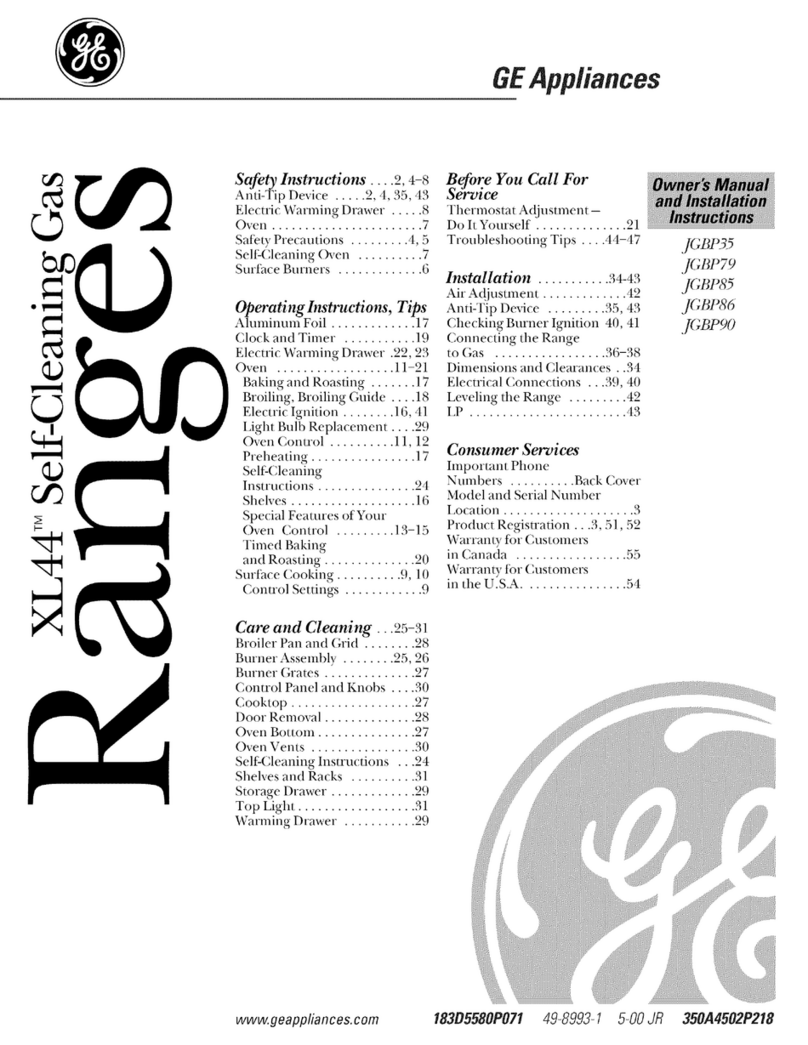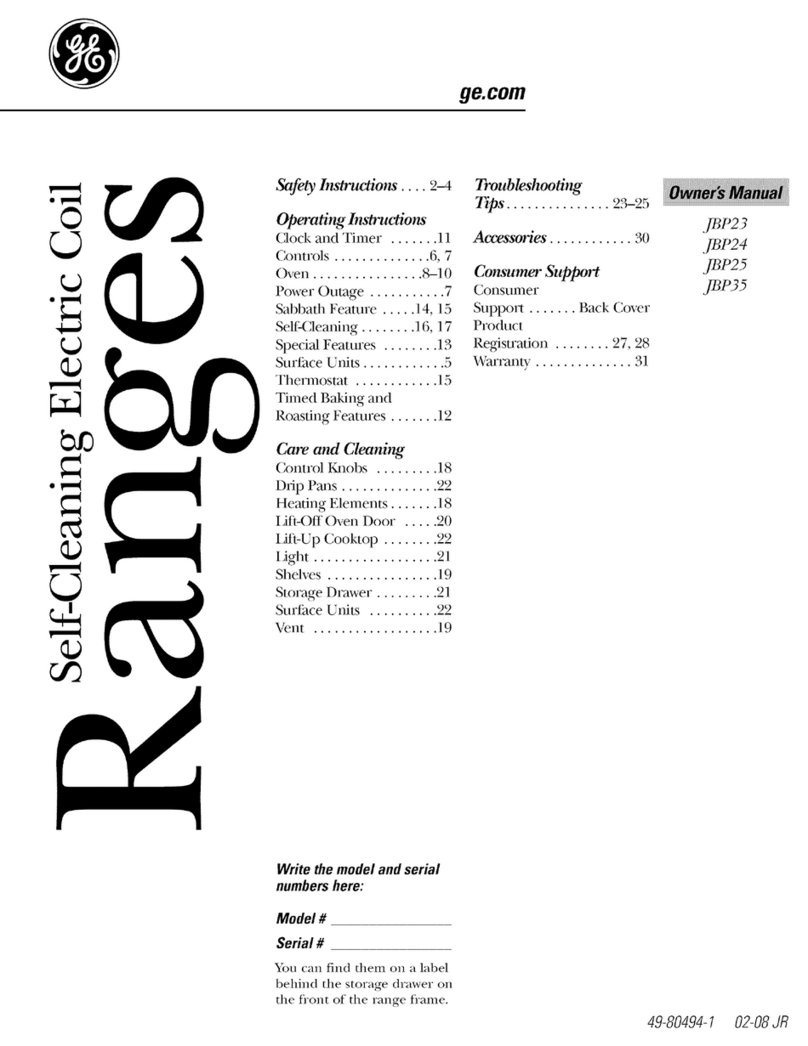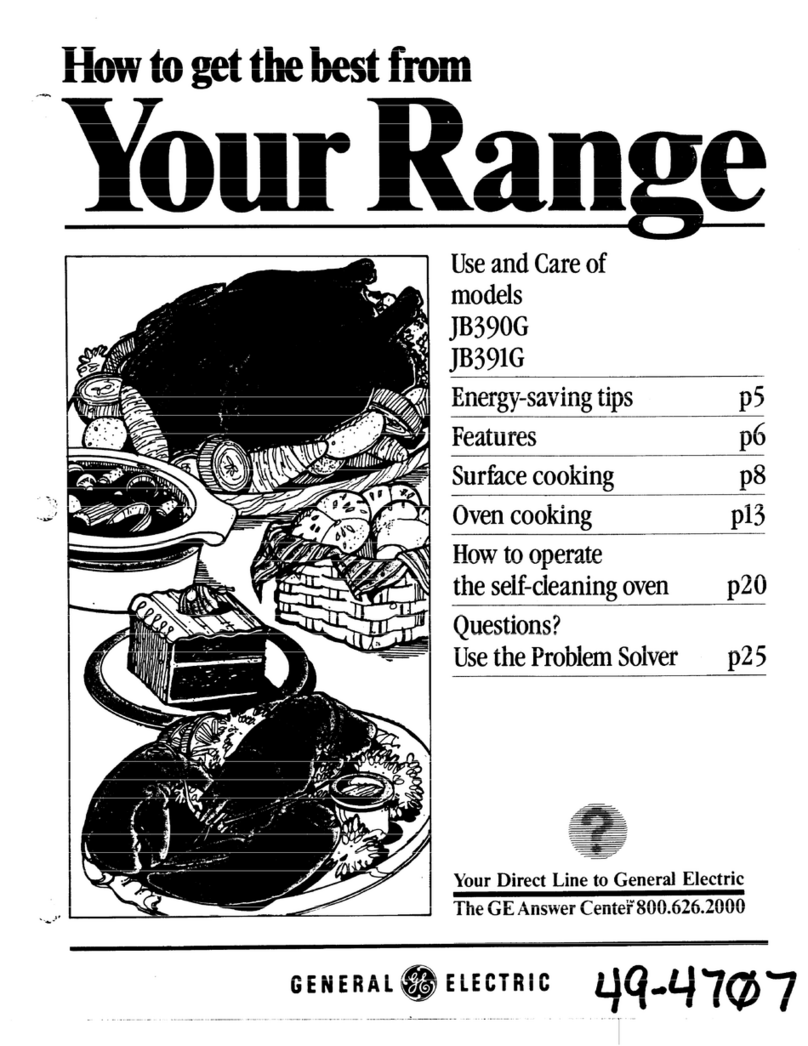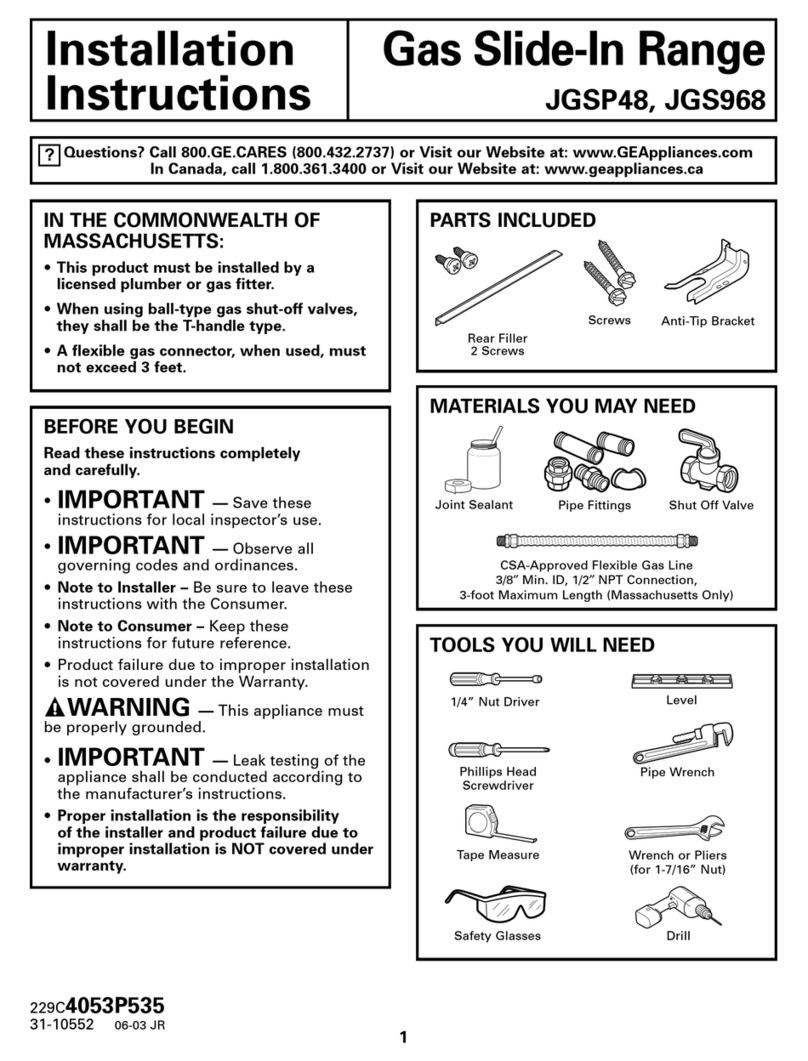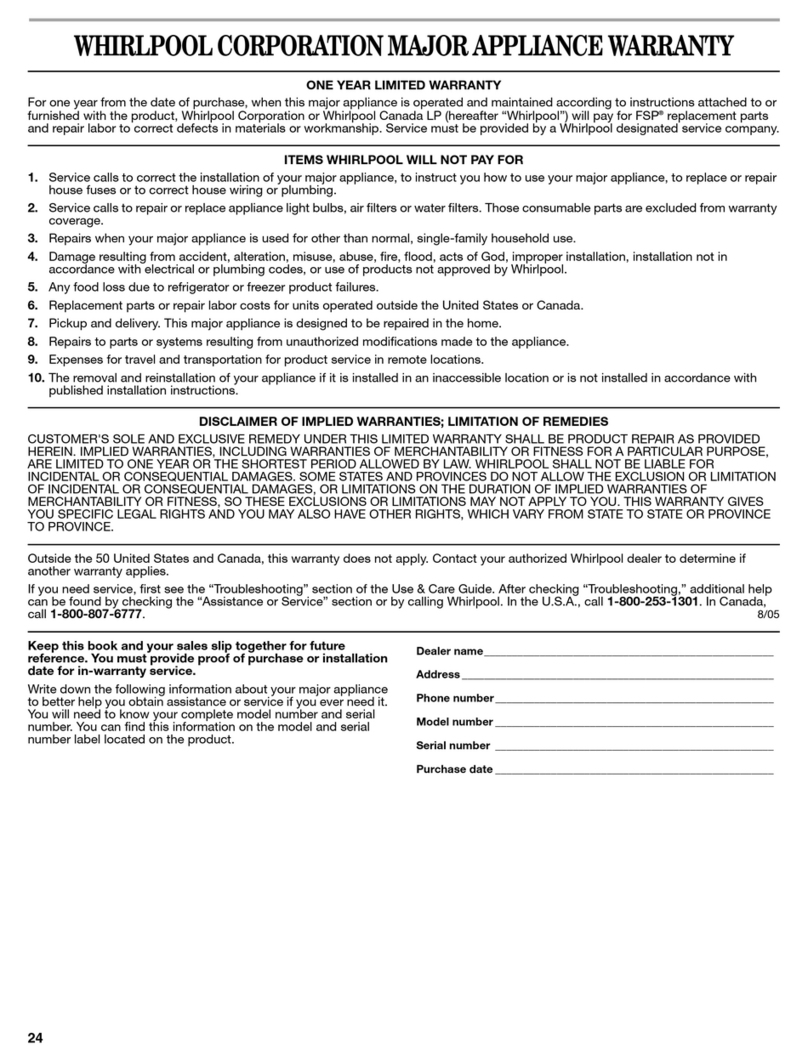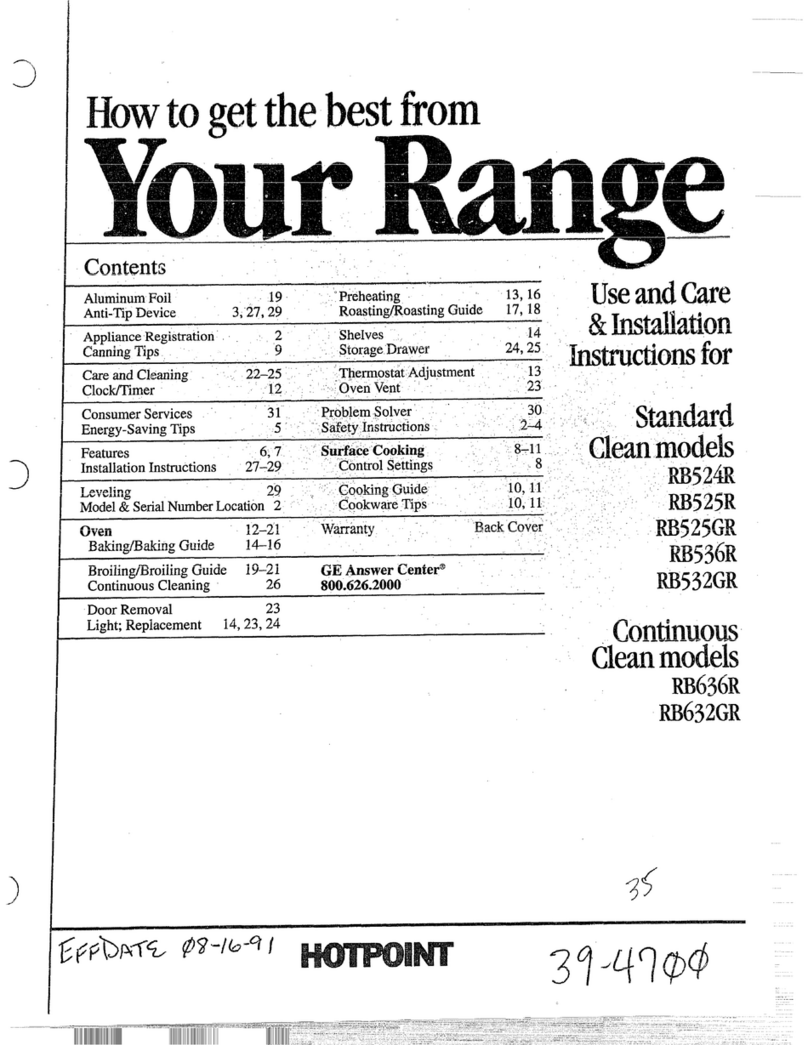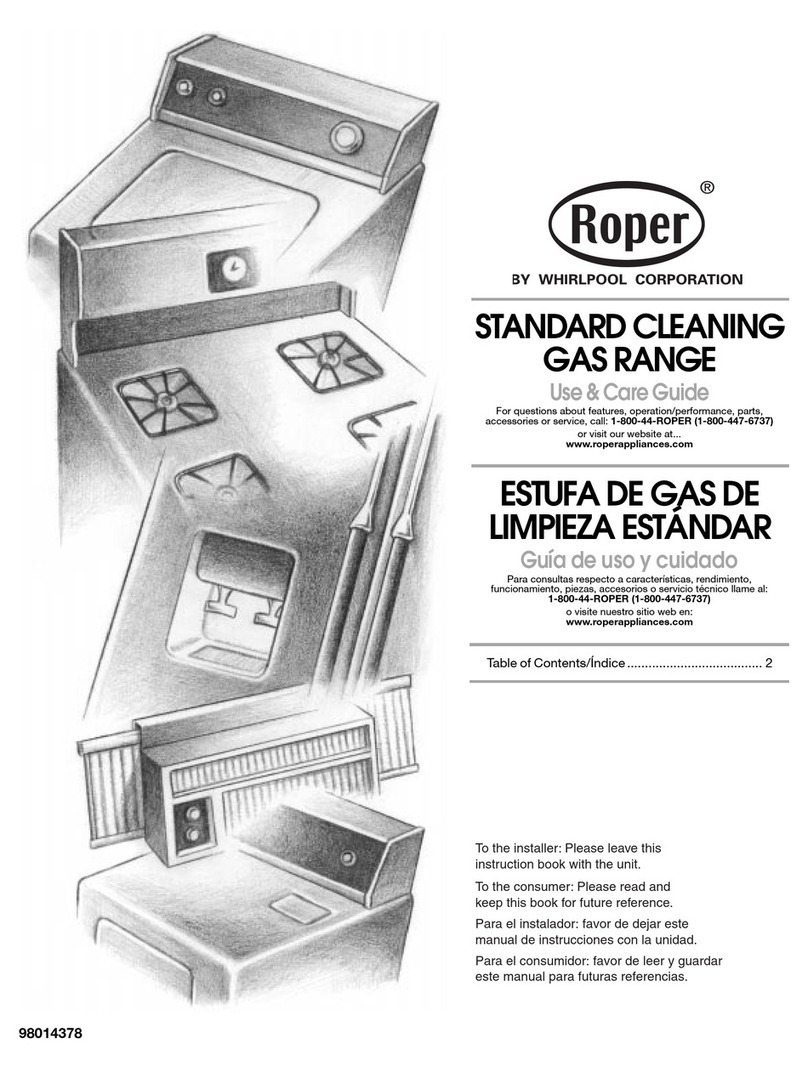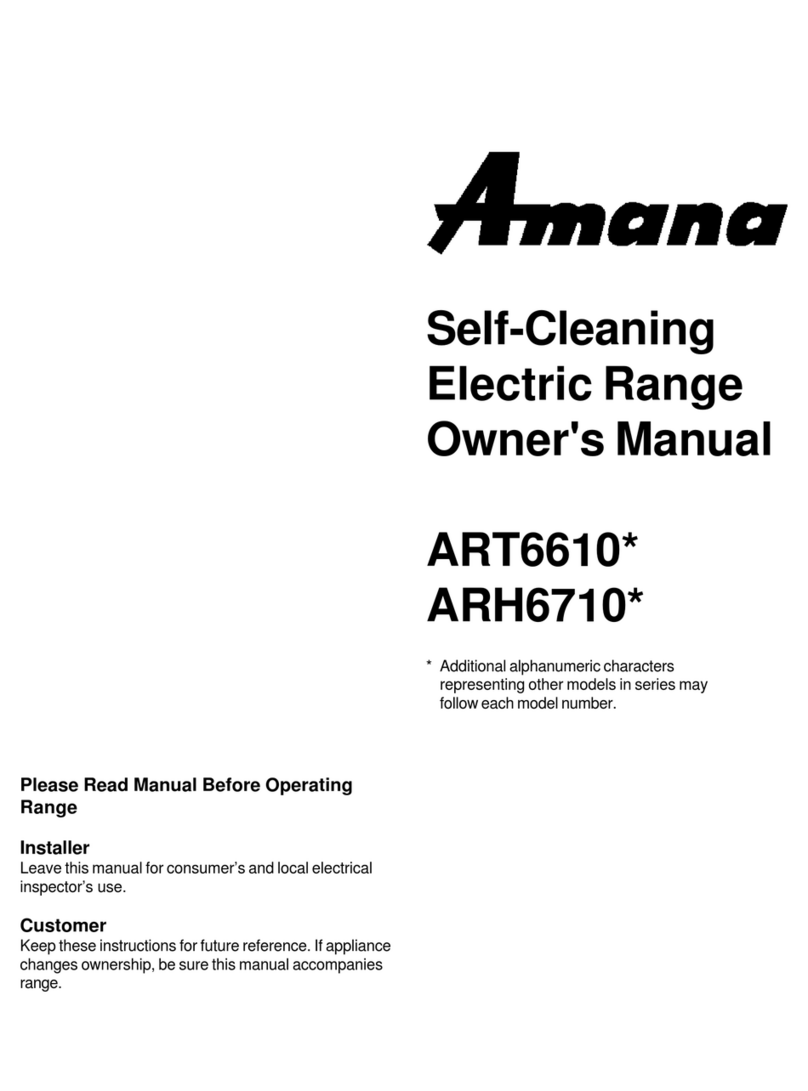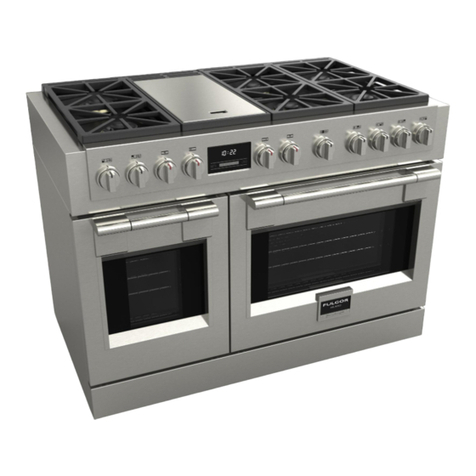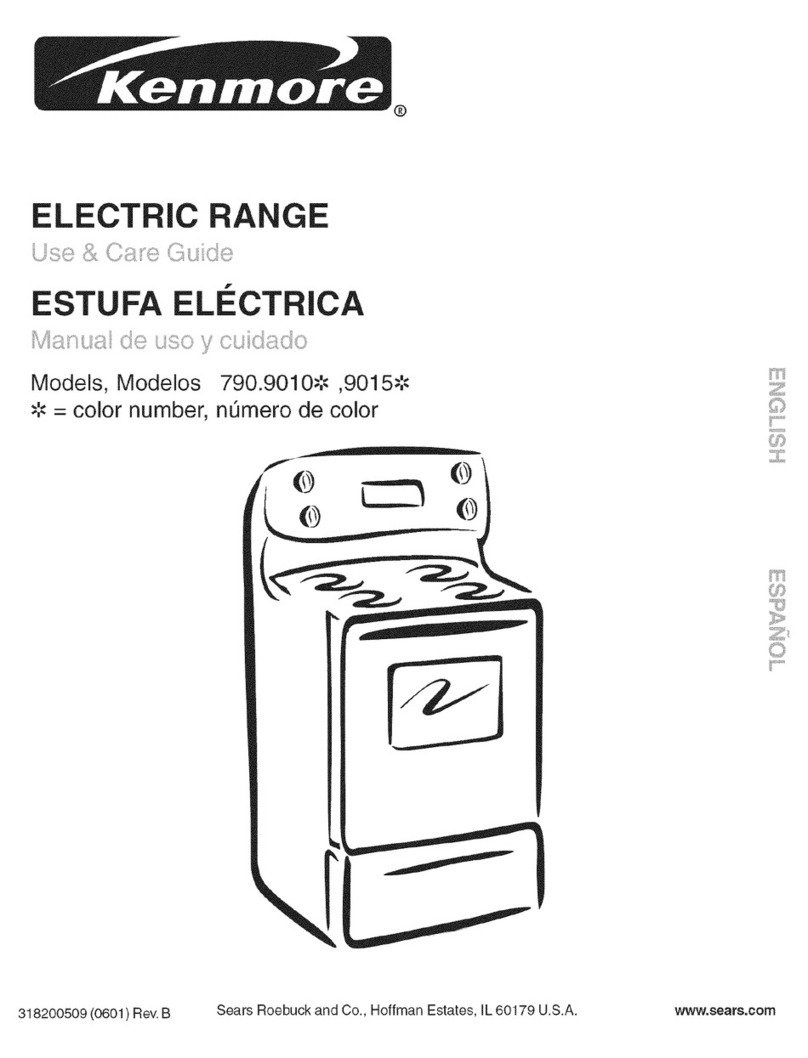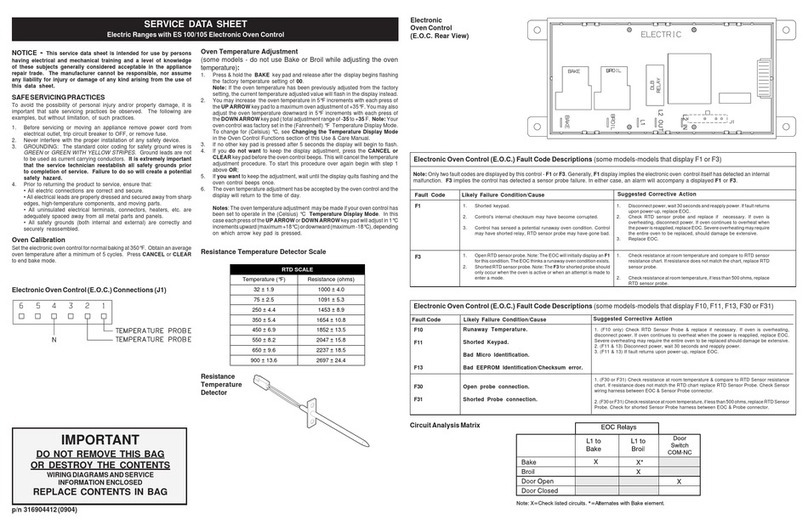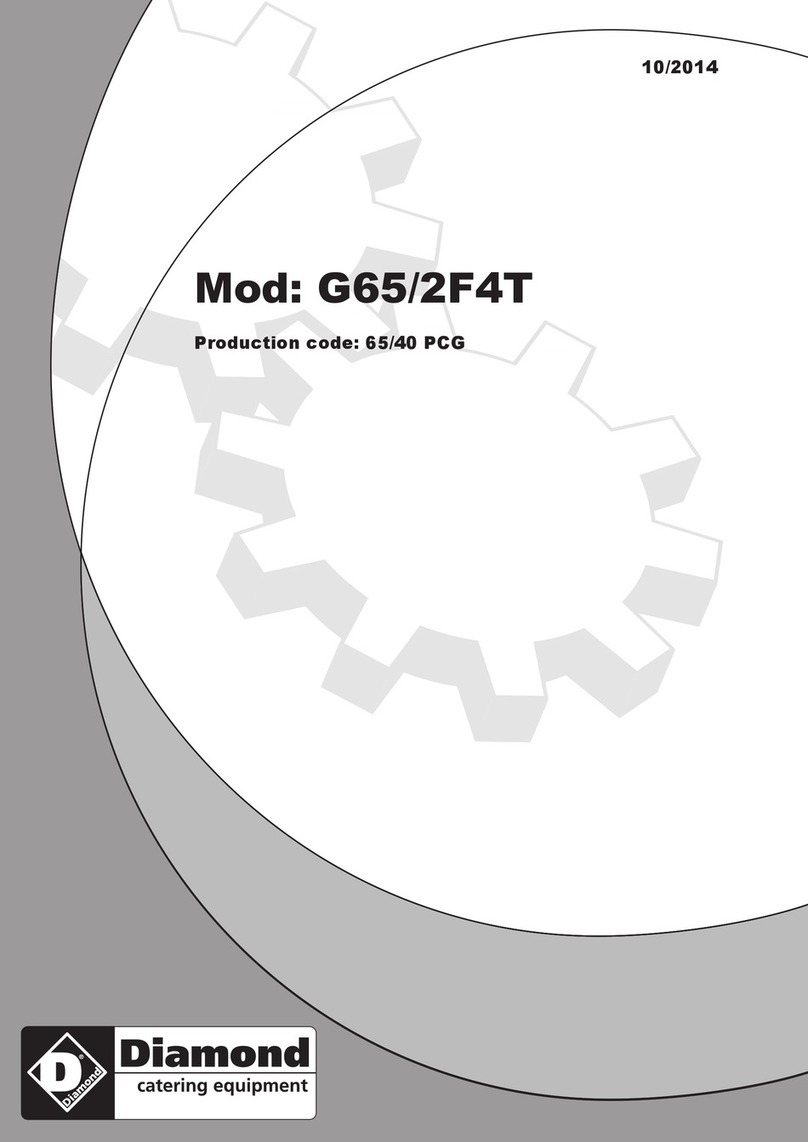6
Installation Instructions
6
ELECTRICAL CONNECTIONS
TO MAKE ELECTRICAL
CONNECTION
•Remove the junction block access
cover (on range back). When re-installing
one-piece wire cover, make sure that wire
does not become pinched between wire
cover and mainback.
•All new constructions, mobile homes,
recreational vehicle and installations where
local codes do not allow grounding through
neutral, re uire a four-wire flexible cord kit.
If the range is rated between 8,750 and
16,500 watts, a range cord kit rated for
40 amps and a minimum of 125/250 Volts
is re uired. If the range is rated between
16,501 and 22,500 watts, a range cord kit
rated for 50 amps and a minimum of
125/250 Volts is re uired. For existing
construction, a three wire flexible cord kit
may be used, and the same ratings apply
as described above.
•When using a cord rated 40 Amps, remove
the next to outermost knockout (1-3/8″
diameter) in the connection plate. Likewise,
when using a cord rated 50 Amps, remove
the outermost knockout (1-3/4″diameter)
in the plate.
•Terminations shall be either closed loop
terminals or open-end spade lugs with
upturned ends. You must use a clamp or
strain relief to hold the cord.
ELECTRICAL REQUIREMENTS
CAUTION: For personal safety,
do not use an extension cord with this
appliance. Remove house fuse or open
circuit breaker before beginning installation.
This appliance must be supplied with the
proper voltage and fre uency, and connected
to an individual properly grounded branch
circuit, protected by a circuit breaker or fuse
having amperage as specified on the rating
plate. The rating plate is located above the
storage drawer on the oven frame.
We recommend you have the electrical wiring
and hookup of your range connected by a
ualified electrician. After installation, have
the electrician show you where your main
range disconnect is located.
Check with your local utilities for electrical
codes which apply in your area. Failure to
wire your oven according to governing codes
could result in a hazardous condition. If there
are no local codes, your range must be wired
and fused to meet the re uirements of the
National Electrical Code, ANSI/NFPA No. 70—
Latest Edition. You can get a copy by writing:
National Fire Protection Association
Batterymarch Park
Quincy, MA 02269
Effective January 1, 1996, the National
Electrical Code requires that new
construction (not existing) utilize a 4-
conductor connection to an electric range.
When installing an electric range in new
construction, follow Steps 3 and 5 for 4-wire
connection.
You must use a 3-wire, single-phase A.C.
208Y/120 Volt or 240/120 Volt, 60 hertz
electrical system.
If the electrical service provided does not
meet the above specifications, have a
licensed electrician install an approved outlet.
OR
